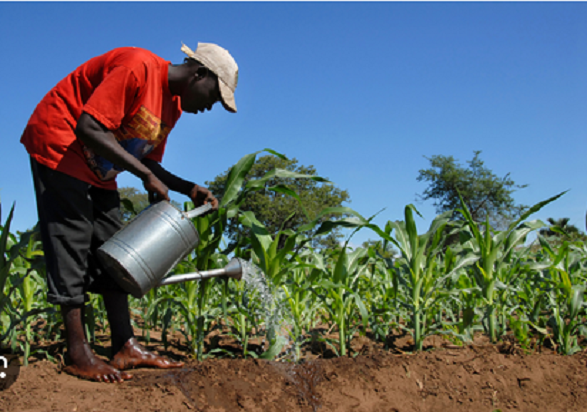The Ministry of Agriculture, Animal Industry and Fisheries has confirmed an outbreak of the African Armyworm (Spodoptera exempta) in Uganda, that was first reported in late March 2022 in Luwero District.
This has so far confirmed the outbreak in 38 districts.
The districts are: Mukono, Wakiso, Katakwi, Bukedea, Bugweri, Serere, Busia, Bugiri, Mityana, Kiryandongo, Namutumba, Kumi Luwero, Kasese, Masindi, Soroti, Nakapiripirit, Bulambuli, Hoima, Amuria, Luuka, Kwania, Oyam, kaliro, Nwoya, Bukwo, Kiruhura, Kikuube, Lira, Kiboga, Mbale, Apac, Kumi, Lyantonde, Kisoro, Amolator, Kaberamaido, Nakaseke and Tororo.
The African Army worm is suspected to have migrated from neighboring countries renown for higher temperatures into Uganda as a result of the climate change that we are currently experiencing.
According to the State Minister for Agriculture, Animal Industry and Fisheries, Fred Bwino Kyakulaga, by its nature, the army worm feeds on cereals including; maize, millet, sorghum and pastures.
“It has also been observed to also feed on sugarcane and wheat 1.2 In maize and other cereals, yield loss as a result of caterpillar feeding goes up to 100%. The damage is serious if the growing point is affected. Damage to pasture and range land can be extensive and severe leading to shortage of fodder,” Bwino said.
Therefore, he noted, “the African Army worm is a food security threat as it significantly affects Cereals and pasture production in the areas infested.
The Ministry has advised affected District Local Governments and other stakeholders on the control measures of the African Armyworm to continue monitoring and report to the nearest authority of any outbreak observed, manually remove and destroy eggs when observed, immediately source Cypermethrin 5EC and mix 100mls- 120mls in 20 ltrs of water and spray; ensure safety, use protective gear while handling pesticdes, do a buffer spray at the edge of the infestation to protect the rest of the pastures. Spray inwards into the infested area. Withdraw grazing for 7-10 days in the sprayed area and where possible a ditch/hole may be dug around the infested area where the caterpillars may fall and when filled with water, they die there.
Bwino says that the Ministry has procured and distributed over 3,000 litres of the recommended pesticides to affected districts to demonstrate to communities on effective control of the pest.
“The Ministry has today recieved another 20,000 litres of the recommended pesticide and more 100 motorized pumps and 200 sets of
protective gear to boost the control measures. Various distributors of the relevant pesticides have been contacted and advised by the Ministry to ensure that enough stocks exist in the country especially nearer the affected communities to control the pest. The cost of a
litre of this pesticide is UGS 20,000 and one litre of pesticide can effectively contain one acre of affected crop/pasture land. Ministry Crop Inspectors have been dispatched to various affected districts to verify reports, establish the pest status as well as provide guidance to the district staff and farmers on the control measures,” Bwino noted.
He says that the Ministry will continue to conduct surveillance and monitoring the pest, with a view to minimize its build-up and potential full-blown epidemic.
Bwino, however, appealed to the public and farmers to be calm and not panic as “this outbreak will be brought under control in the shortest possible time.”





